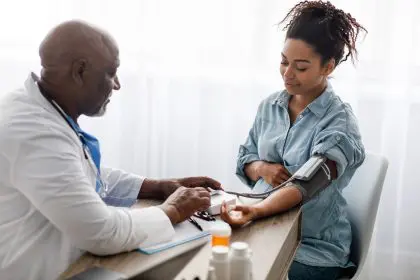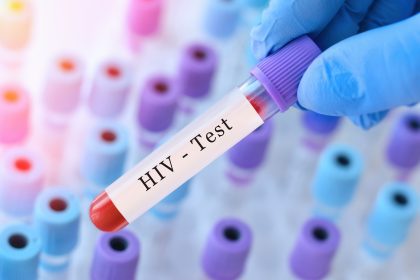While most fevers represent beneficial immune responses requiring minimal intervention, certain temperature elevations create genuine medical emergencies that demand both immediate home management and professional care. Extremely high body temperatures – generally exceeding 103°F (39.4°C) in adults or 102°F (38.9°C) in children – can potentially damage vital organs, trigger seizures, or indicate severe underlying infections requiring urgent treatment.
The waiting period between recognizing a dangerous fever and emergency services arrival creates a critical window where appropriate home intervention potentially prevents serious complications. Understanding which cooling measures help versus harm during this period ensures the best possible outcome while avoiding actions that might inadvertently worsen the situation.
Remember that these measures represent temporary management strategies rather than definitive treatment. Even when fever appears to respond to emergency measures, completing the planned medical evaluation remains essential, as dangerous fevers often signal serious underlying conditions requiring professional diagnosis and specific treatment.
6 immediate actions while awaiting emergency help
- Remove excess clothing and blankets to allow natural heat dissipation through the skin. While the person may feel cold or experience chills despite high temperature, excessive covering traps body heat and potentially elevates temperature further. Remove heavy garments and use only a single light sheet for covering. The goal involves allowing body heat to disperse naturally without creating intense discomfort that triggers additional shivering, which would generate more heat.
- Apply cool compresses to key heat-dissipation areas, particularly the forehead, neck, armpits, and groin. These locations contain major blood vessels close to the skin surface, allowing efficient cooling of circulating blood. Use clean cloths soaked in cool (not ice-cold) water, replacing them frequently as they warm. Rotate between different areas rather than focusing exclusively on the forehead, as this multi-location approach cools the body more efficiently. Avoid cold water immersion or ice packs directly against skin, as these extreme measures potentially trigger shivering that counterproductively raises core temperature.
- Administer appropriate fever-reducing medication if the person can safely swallow. For adults and children over 6 months, acetaminophen (Tylenol) or ibuprofen (Advil, Motrin) provides effective fever reduction when given at appropriate doses. Check package instructions for correct weight-based or age-based dosing, and never exceed recommended amounts. Avoid aspirin in children or teenagers due to the risk of Reye’s syndrome. If unsure about medication choices, dosing, or potential interactions with existing medications, consult with the emergency dispatcher for guidance.
- Offer small sips of cool fluids to address dehydration that commonly accompanies high fevers. Focus on water or electrolyte-containing drinks rather than sugary beverages, and avoid caffeine or alcohol which worsen dehydration. For those having difficulty drinking, try offering ice chips or frozen electrolyte popsicles that melt slowly in the mouth. Continue offering fluids every few minutes rather than attempting large amounts at once, which may trigger vomiting. Never force fluids in someone who appears confused or has difficulty swallowing.
- Position the person in the recovery position (on their side with top knee bent) if they appear extremely drowsy, confused, or at risk of vomiting. This positioning prevents potential airway complications by allowing any vomit to exit the mouth rather than being aspirated into the lungs. Support the position with pillows if necessary, and ensure nothing restricts breathing. For pregnant individuals, the left side position optimizes circulation. If the person appears fully alert and comfortable, semi-reclined positioning with head and shoulders elevated may improve comfort while still allowing effective cooling.
- Monitor and document vital signs and symptoms while awaiting help. Note the exact temperature readings (including time taken and method used), breathing rate, level of consciousness, and any developing symptoms like vomiting, severe headache, unusual rash, or increasing confusion. This information proves invaluable to arriving emergency personnel for both assessment and treatment decisions. If the person experiences any seizure activity, focus on protecting them from injury by moving dangerous objects away, loosening any tight clothing around the neck, and timing the seizure duration.
Critical don’ts during emergency fever management
Several common fever-management approaches can potentially worsen emergency situations. Understanding these contraindicated measures proves as important as knowing appropriate interventions.
Alcohol bathing represents a dangerous practice occasionally suggested by outdated sources. This approach creates multiple risks including alcohol absorption through skin (potentially causing toxicity), respiratory irritation from fumes, and intense discomfort. Additionally, rapid evaporation potentially creates excessive cooling that triggers shivering and temperature elevation. This method offers no advantages over safer cooling approaches and introduces significant risks.
Ice baths or extremely cold compresses often trigger intense shivering that counterproductively raises core temperature while creating extreme discomfort. These aggressive cooling methods can also divert blood flow away from the skin as vessels constrict, preventing efficient heat release and potentially worsening the fever. Additionally, extreme temperature changes stress the cardiovascular system, potentially creating additional complications in already vulnerable individuals.
Multiple fever-reducing medications given simultaneously or at higher-than-recommended doses create substantial risk without additional benefit. Combining different medications containing the same active ingredient (often hidden in multi-symptom products) can easily result in dangerous overdose, particularly affecting the liver or kidneys. Follow package directions precisely, and never attempt to accelerate fever reduction through extra medication.
Forced fluid consumption, particularly in drowsy or confused individuals, creates aspiration risk that potentially leads to pneumonia or choking. While hydration remains important, patient safety takes priority. Offer fluids only when the person appears fully alert and can swallow normally. Emergency medical services will provide appropriate intravenous hydration when necessary for those unable to drink safely.
Physically restraining someone experiencing fever-related confusion or agitation potentially causes injury to both the person and caregivers. Instead, create a safe environment by removing hazardous objects, using calming verbal reassurance, and maintaining a quiet, dimly lit setting that minimizes additional stimulation. If absolutely necessary to prevent self-harm, use minimal, gentle guidance rather than forceful restraint.
Special considerations for specific populations
Certain groups require modified emergency fever management based on unique physiological considerations or risk factors. Understanding these differences ensures appropriate care for vulnerable populations.
Infants under 3 months with any fever (generally defined as temperature above 100.4°F or 38°C) require immediate medical attention rather than extended home management. Their immature immune systems and limited fever response mechanisms create higher risk for serious underlying infections. While awaiting emergency services, focus on keeping the infant lightly dressed, offering normal feeding if the infant appears interested, and monitoring closely for any changes in alertness or breathing pattern.
Elderly individuals often show blunted fever responses, meaning even relatively minor temperature elevations may indicate serious infection. Conversely, their thermoregulatory systems may struggle with cooling interventions, creating risk for excessive temperature drop. Use particularly gentle cooling measures, monitor closely for shivering (which should prompt reduction in cooling efforts), and pay special attention to hydration status, as older adults often have diminished thirst sensation despite significant fluid needs.
Immunocompromised people, including those with HIV/AIDS, cancer, transplant recipients, or those taking immunosuppressive medications, face substantially higher risk from infections causing fever. Even seemingly moderate fevers might indicate life-threatening processes requiring urgent intervention. While basic cooling principles remain similar, recognize that normal inflammatory signs may be diminished, making careful monitoring of subtle changes in mental status or breathing particularly important for this population.
Individuals with history of febrile seizures require particularly prompt fever reduction, as their threshold for seizure activity during temperature elevation may be lower than the general population. Prioritize appropriate medication administration and cooling measures, but equally important, ensure the environment remains safe for potential seizure activity by removing nearby hazardous objects and creating space where the person won’t strike furniture or other hard surfaces if seizures occur.
Pregnant women with high fevers face potential risks to both themselves and the developing fetus, as hyperthermia during pregnancy associates with various complications. Use acetaminophen rather than other fever reducers when possible, position on the left side to optimize circulation, and ensure cooling measures concentrate on the torso rather than extremities to maximize core temperature reduction without compromising peripheral circulation.
Signs the situation is worsening while awaiting help
Certain developments during the waiting period signal deterioration requiring immediate update to emergency dispatchers. Recognizing these warning signs ensures appropriate prioritization and preparation by arriving medical personnel.
Altered mental status progressing beyond mild confusion represents a particularly concerning development. If the person becomes increasingly disoriented, unable to recognize familiar people, unresponsive to questions, or extremely agitated, these changes suggest potential direct brain effects from either extreme temperature or underlying infection. This progression warrants immediate notification to dispatchers as it may indicate need for treatment protocol adjustments.
Breathing difficulties, including rapid, shallow breathing, visible struggling for air, or unusual breath sounds require immediate reporting. These changes potentially indicate either progressive infection affecting the respiratory system or metabolic changes from severe fever affecting breathing control. Positioning becomes particularly important in this situation – keep the person’s upper body elevated approximately 30-45 degrees if they’re experiencing breathing problems and not at risk of falling.
Seizure activity, even brief episodes, signals critical temperature impact on brain function. If seizures occur, focus entirely on preventing injury rather than restraining movements: move dangerous objects away, place something soft under the head if possible without moving the person, and note the exact start time. Never place anything in the mouth during a seizure, and note whether the seizure affects the entire body or remains limited to specific areas, as this information helps emergency providers assess severity.
New rashes developing with fever, particularly purple or red spots that don’t temporarily blanch (fade) when pressed, potentially indicate serious bacterial infections like meningococcemia requiring immediate intensive treatment. Other concerning rash characteristics include rapid spread, significant pain at the rash site, or accompanying swelling. Document and photograph any rashes when possible, as these may evolve or change before medical evaluation.
Severe headache developing or intensifying despite fever-reduction measures raises concern for specific infections affecting the central nervous system, including meningitis or encephalitis. This symptom becomes particularly significant when accompanied by neck stiffness, inability to lower the chin to chest, marked sensitivity to light, or vision changes. Report these developments immediately while continuing basic fever management measures.
What to have prepared when emergency services arrive
Organizing specific information and items before emergency personnel arrival significantly expedites assessment and treatment initiation. This preparation potentially improves outcomes by reducing time to definitive care.
Medication list compilation provides crucial information for treatment decisions. Gather all prescription bottles, over-the-counter medications, supplements, and any fever treatments already administered (including exact times and doses). This complete information helps emergency providers identify potential medication interactions, avoid duplicate treatments, and understand factors potentially contributing to or masking symptoms.
Medical history summary, particularly recent illnesses, surgeries, chronic conditions, allergies, and any recent travel or unusual exposures helps narrow diagnostic possibilities. Note any recent antibiotics, immunizations, or medical procedures, as these potentially relate to current symptoms. For individuals unable to communicate effectively, this background information proves especially valuable in guiding initial assessment and treatment approaches.
Temperature tracking documentation, showing exact readings with times and measurement methods used, helps emergency personnel understand the fever pattern and response to home interventions. Note whether readings were oral, tympanic (ear), temporal (forehead), axillary (armpit), or rectal, as these methods have different normal ranges and reliability factors that influence interpretation.
Contact information for regular healthcare providers facilitates information sharing that potentially improves care coordination. Primary care physicians, specialists managing chronic conditions, and other relevant providers often possess valuable historical information that helps contextualize current symptoms. Having phone numbers readily available allows emergency personnel to quickly access this background when needed.
Insurance information and identification expedites the administrative aspects of emergency care, potentially reducing delays in hospital admission or specialized testing if required. While medical care will proceed regardless of immediately available documentation, having these items ready prevents potential treatment interruptions for administrative questions later in the care process.
By implementing these evidence-based emergency measures while awaiting professional help, you significantly improve outcomes for dangerous fever situations while avoiding interventions that might worsen the condition. Remember that these steps represent temporary management rather than definitive treatment – professional medical evaluation remains essential even if symptoms appear to improve with home measures.














